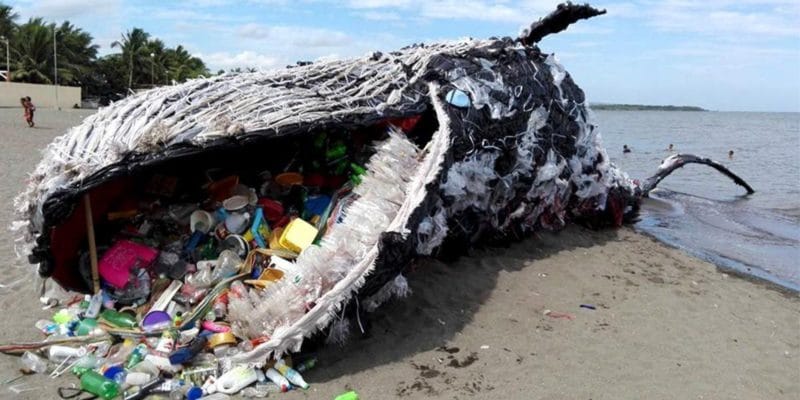A UN-backed ocean cleanup vessel aiming at cleaning up 1.8 trillion pieces of plastic debris in the Pacific Ocean has left San Francisco, California on its first voyage.

The vessel consists of a 600-metre long floater that sits at the surface of the water and a tapered three-metre deep skirt attached below which catches plastic debris.
The cleanup system, designed by a 24-year-old Dutch inventor and “UN Environment Champion of the Earth”, Boyan Slat, would undergo some trials before travelling 1,000 nautical miles to what is known as the Great Pacific Garbage Patch.
The huge mass of marine debris, situated in the North Pacific Ocean halfway between the Californian coast and Hawaii, is estimated by Slat’s Ocean Cleanup organisation to measure 1.6 million square kilometres – three times the size of France – and contains 1.8 trillion pieces of plastic.
That amounts to 250 pieces for every person on the planet, the organisation said.
The long-awaited launch of the first deployable model of the marine litter collection system, named “System 001,” took place on Saturday at the Golden Gate Bridge following four years of research and adjustments.
The system is carried by the ocean’s currents and waves, passively catching plastic debris along the way.
Ocean Cleanup’s research indicated that a scaled-up fleet of 60 such systems could eventually clean up 50 per cent of the patch in the next five years.
The trials are taking place 240 nautical miles into the Pacific Ocean and once they are completed, the devices would be sent the remaining 1,000 nautical miles out to the Great Pacific Garbage Patch.
Slat founded Ocean Cleanup when he was 18-years-old, and he was named a “Champion of the Earth” by UN Environment the following year in recognition of his quest to find a solution to the ever-growing global problem of plastic debris in oceans.
“Champions of the Earth” is the UN’s highest environmental honour, celebrating outstanding figures from the public and private sectors and from civil society organisations whose actions have had a transformative positive impact on the environment.
Every year, at least eight million tonnes of plastic leak into the oceans, and besides washing up on beaches and shorelines, plastic marine debris accumulates in five garbage patches around the world.
Of the five garbage patches, the Great Pacific Garbage Patch is the largest.
By Prudence Arobani
